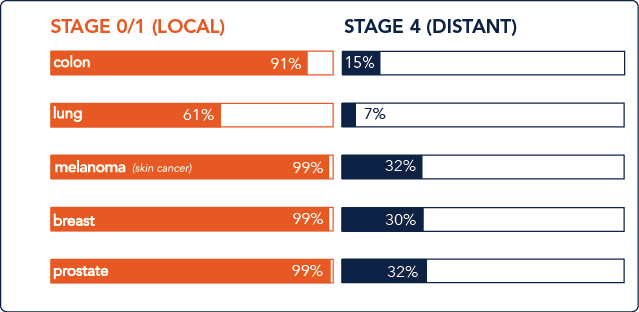
Start Talking
We know that cancer can be scary, but talking about it doesn’t have to be. We focus our conversation on helping you detect cancer early and teaching you how to take action because we know this gives you the best chance of significantly improving your outcome. The evidence is clear. So let’s start talking about it.
Two out of every five Americans will be diagnosed with cancer; some will have a family history, but most will not. And while there are over 200 different types of cancer, there are CDC recommended screenings for only four: breast, colon, cervical, and lung cancers.
We know that cancer can be scary, but talking about it doesn’t have to be.
Cancer often first reveals itself as a subtle, persistent change to your normal health. Lots of people ignore or minimize health changes like these or accept them as normal aging or “slowing down.” This gives cancer time to progress to advanced stages that are more challenging to treat and most difficult to cure. That’s why it’s important to understand how to recognize the early warning signs of cancer.
Cancer Survival Rates
In some cases, you are 10 times as likely to survive cancer when it is detected in Stage 1 vs. Stage 4. Take a moment to review this chart and compare the survival rates for these cancers when they are diagnosed and treated early (Stage 1) vs. late (Stage 4). (Source: American Cancer Society—5-year relative survival rates, using SEER stages, based on people diagnosed with [type] of cancer between 2011 and 2017.)

3 Steps Detect
We developed 3 Steps Detect to make early cancer detection as easy as possible for you and your loved ones. We sorted through all of the complexity to bring you a simple three-step plan to:



- Know Your Great
- Use the 2-Week Rule
- Share with Your Doctor